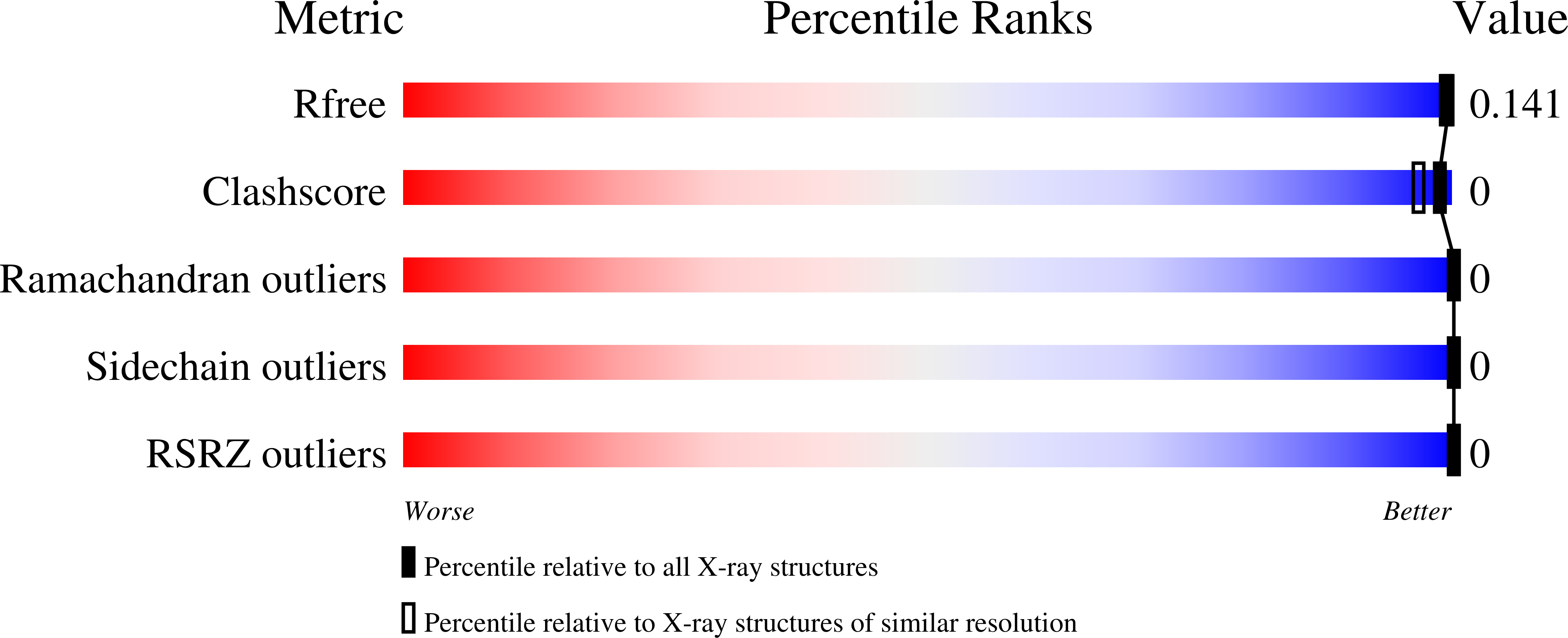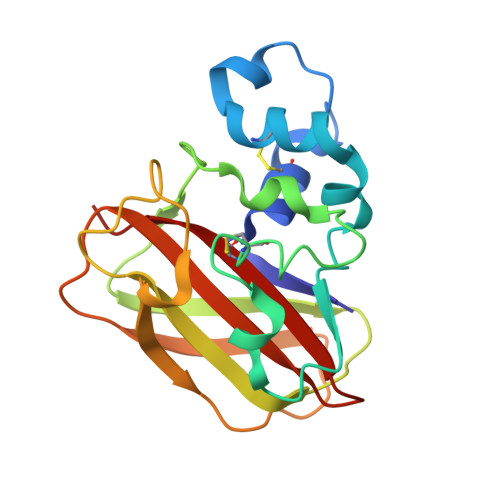Structural and functional characterization of a conserved pair of bacterial cellulose-oxidizing lytic polysaccharide monooxygenases.
Forsberg, Z., Mackenzie, A.K., Srlie, M., Rhr, A.K., Helland, R., Arvai, A.S., Vaaje-Kolstad, G., Eijsink, V.G.(2014) Proc Natl Acad Sci U S A 111: 8446-8451
- PubMed: 24912171
- DOI: https://doi.org/10.1073/pnas.1402771111
- Primary Citation of Related Structures:
4OY6, 4OY7, 4OY8 - PubMed Abstract:
For decades, the enzymatic conversion of cellulose was thought to rely on the synergistic action of hydrolytic enzymes, but recent work has shown that lytic polysaccharide monooxygenases (LPMOs) are important contributors to this process. We describe the structural and functional characterization of two functionally coupled cellulose-active LPMOs belonging to auxiliary activity family 10 (AA10) that commonly occur in cellulolytic bacteria. One of these LPMOs cleaves glycosidic bonds by oxidation of the C1 carbon, whereas the other can oxidize both C1 and C4. We thus demonstrate that C4 oxidation is not confined to fungal AA9-type LPMOs. X-ray crystallographic structures were obtained for the enzyme pair from Streptomyces coelicolor, solved at 1.3 Å (ScLPMO10B) and 1.5 Å (CelS2 or ScLPMO10C) resolution. Structural comparisons revealed differences in active site architecture that could relate to the ability to oxidize C4 (and that also seem to apply to AA9-type LPMOs). Despite variation in active site architecture, the two enzymes exhibited similar affinities for Cu(2+) (12-31 nM), redox potentials (242 and 251 mV), and electron paramagnetic resonance spectra, with only the latter clearly different from those of chitin-active AA10-type LPMOs. We conclude that substrate specificity depends not on copper site architecture, but rather on variation in substrate binding and orientation. During cellulose degradation, the members of this LPMO pair act in synergy, indicating different functional roles and providing a rationale for the abundance of these enzymes in biomass-degrading organisms.
Organizational Affiliation:
Department of Chemistry, Biotechnology, and Food Science, Norwegian University of Life Sciences, N-1432 Aas, Norway;
















